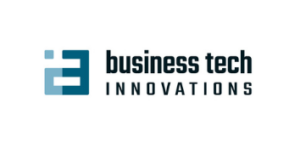
In the wake of the global shift towards remote work, businesses are increasingly reliant on digital tools and platforms to facilitate collaboration and document management. With teams dispersed across different locations, ensuring the security and accessibility of shared documents has become paramount. Fortunately, modern technology offers a plethora of solutions to streamline remote collaboration while maintaining robust security measures.
The Importance of Secure Document Management in Remote Collaboration
Remote collaboration relies heavily on the seamless sharing and editing of documents among team members. Whether it’s project proposals, contracts, or internal reports, the ability to access and collaborate on documents in real-time is essential for productivity and efficiency. However, this convenience must be balanced with robust security measures to protect sensitive information from unauthorized access or breaches.
4 Key Challenges in Remote Document Management
- Data Security: Ensuring that sensitive documents are protected from unauthorized access or data breaches.
- Version Control: Managing multiple versions of documents and tracking changes made by different team members.
- Accessibility: Ensuring that team members can access documents from any location and device securely.
- Collaboration: Facilitating real-time collaboration and feedback on documents without compromising security.
Modern Solutions for Secure Document Management
Cloud-Based Document Collaboration Platforms
Cloud-based platforms such as Google Workspace, Microsoft 365, and Dropbox offer robust solutions for secure document management and collaboration. These platforms allow team members to store, share, and collaborate on documents in real-time, with built-in security features such as encryption, access controls, and audit trails.
Electronic Signature Solutions
Electronic signature solutions like DocuSign and Adobe Sign streamline the process of signing and approving documents remotely. These platforms provide legally binding electronic signatures and audit trails, ensuring document integrity and compliance with regulatory requirements.
Secure Document Sharing Tools
Secure document sharing tools such as ShareFile and Box offer encrypted file storage and sharing capabilities, with advanced access controls and permissions management. These tools enable secure collaboration on documents while maintaining compliance with data protection regulations.
Digital Rights Management (DRM) Solutions
Digital Rights Management (DRM) solutions like Seclore and FileOpen provide granular control over document access and usage rights. These solutions enable organizations to protect sensitive documents from unauthorized access, copying, or distribution, even after they have been shared externally.
Best Practices for Secure Remote Collaboration
- Encrypt Sensitive Documents: Use encryption to protect sensitive documents both in transit and at rest.
- Implement Access Controls: Assign permissions and access levels to control who can view, edit, or share documents.
- Train Employees: Educate employees on best practices for secure document management and remote collaboration.
- Regular Audits: Conduct regular audits of document access and usage to identify and mitigate potential security risks.
- Stay Updated: Keep software and security protocols up to date to mitigate vulnerabilities and ensure compliance with industry standards.
Embracing the Future of Collaboration
In conclusion, modern solutions for secure document management play a crucial role in enhancing remote collaboration and ensuring the confidentiality, integrity, and availability of shared documents. By leveraging cloud-based platforms, electronic signature solutions, secure document sharing tools, and DRM solutions, organizations can streamline collaboration while maintaining robust security measures. By following best practices and staying updated on emerging technologies, businesses can navigate the complexities of remote work and facilitate seamless collaboration among distributed teams.




